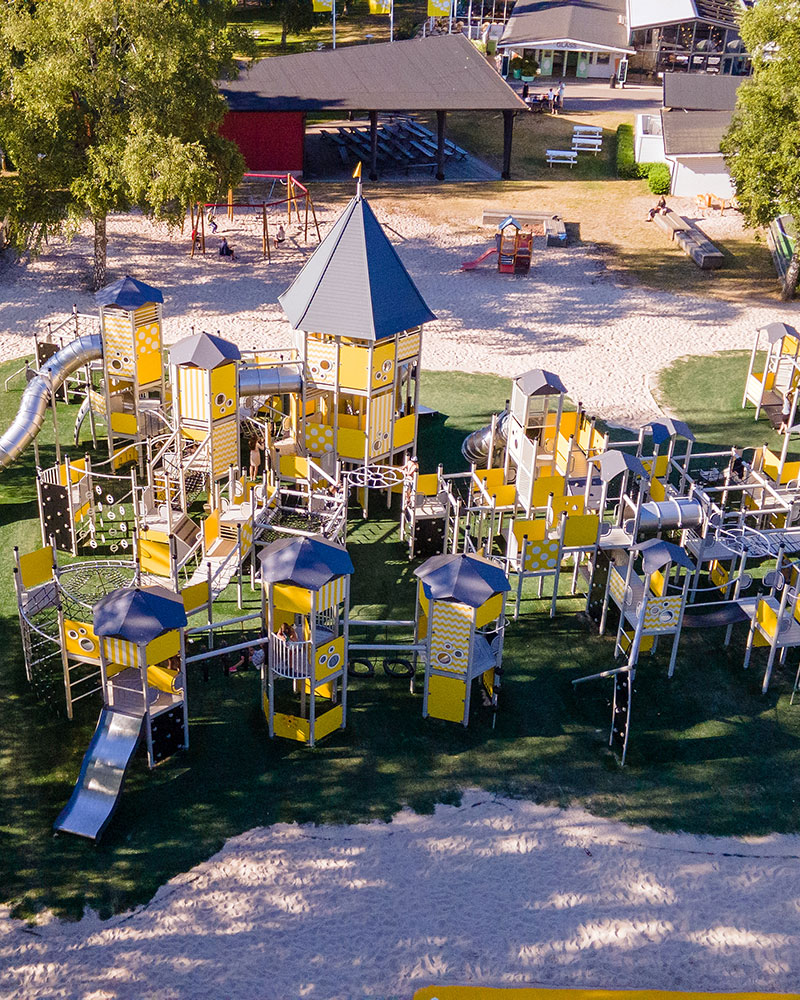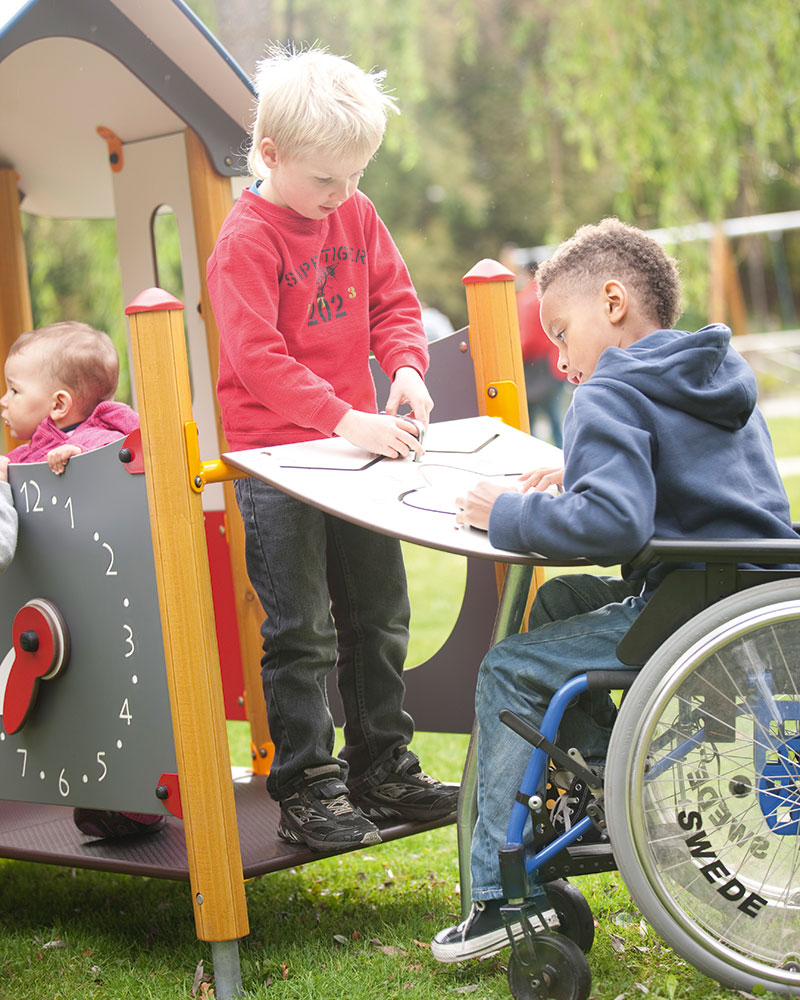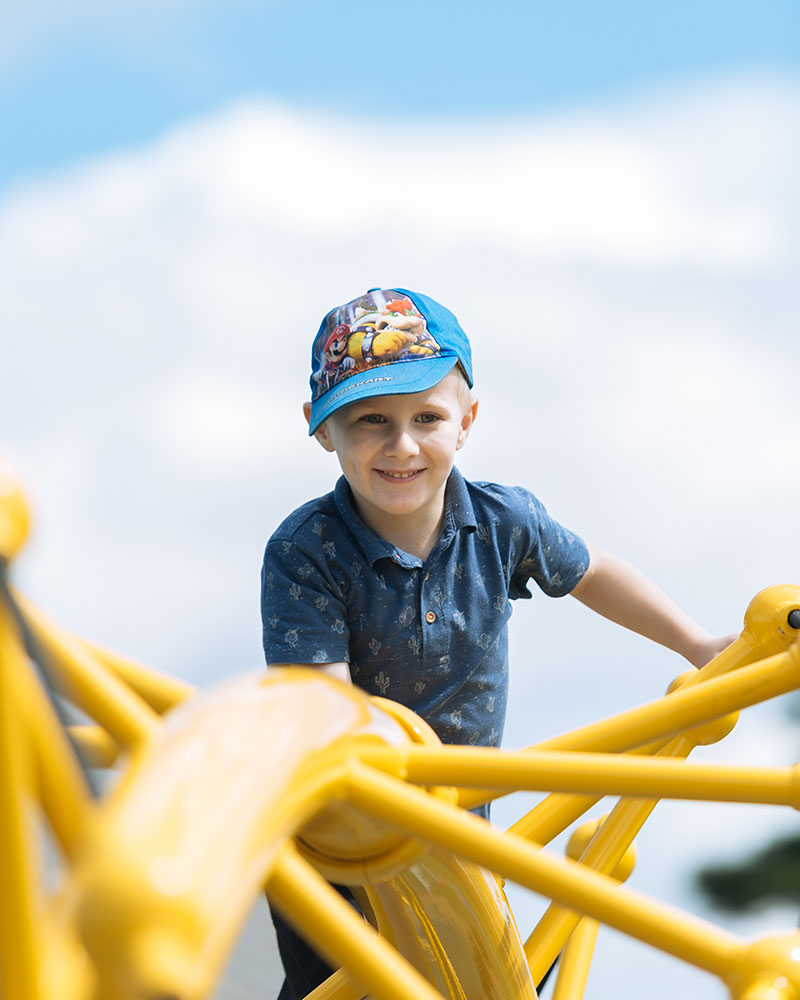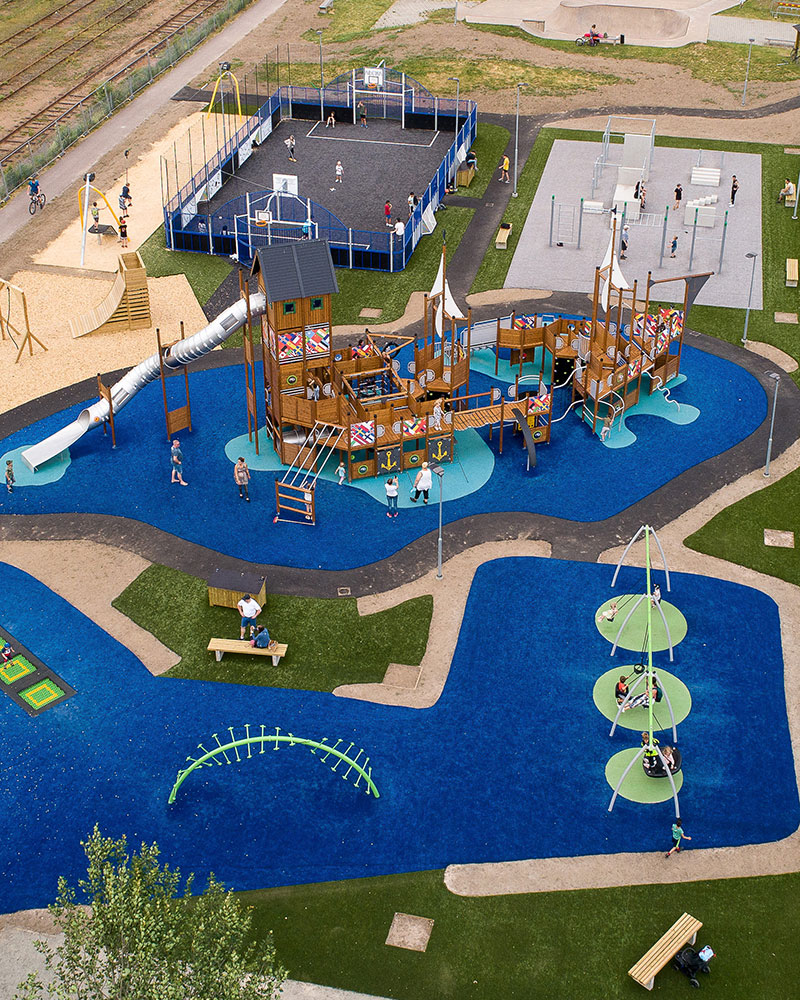How to make an inclusive playground accessible
Inclusive playgrounds must provide children, parents, carers and people of all abilities inclusive access and the opportunity to move throughout the play space easily, safely and independently.
Selecting the surfacing
Surfacing is crucial for making playgrounds accessible, so it's important to choose the right type based on design, location, play equipment, and features. To select the best surfacing, visit various play spaces and test different surfaces with children and adults with visual impairments and mobility aids. Ensure surfaces meet EN 1176 and EN 1177 standards and are suitable for their intended use, such as year-round accessible paths and appropriate materials for fall zones.
While loose-fill and textured surfaces may not be ideal for access, they offer high play value and shouldn't be completely excluded. Our knowledgeable designers will ensure the appropriate surfacing based on your requirements, equipment, location, and safety standards.
Placing equipment and features at varying heights
Research shows that children must touch as well as see to be engaged. They should interact with play features, wayfinding, and the environment for a tactile experience. Ensure children can reach and touch play equipment, features, and landscaping, which is crucial for their engagement. Place play panels, landscaping, telescopes, water, and sand tables at varying heights to accommodate different reach ranges. Include duplicate equipment at different heights, like two telescopes at different levels. Ensure wheelchair accessibility by allowing children to sit at or under the play equipment and features.
Allowing users to easily transfer to and from the play equipment
Transfer platforms enable children or adults using mobility aids to transfer independently, facilitating easier use of the play space. Consider adjacent surfaces to accessible routes and the possibility of users transferring from a chair, and examine how a child might transfer to equipment without a platform, using surfaces or grip points. Based on community needs, provide on-deck transfers, especially at slides, and consider a deck with a transfer platform on one side and steps on the other to support children of different abilities playing together.
Transfer steps allow those without use of their legs to move between elevation changes on play equipment and back to a mobility aid. Smaller height changes between elevations, decks, or play surfaces are better for those moving themselves on their behind.
Create wide enough routes throughout the play space
Build accessible routes throughout the play space to accommodate wheelchair users, parents with prams, and children who prefer not to be touched. Ensure entrances, gates, exits, and busy routes are wide enough for mobility aids. Vary passage widths to provide choice and play value, and ensure enough room in front of play components for a child in a wheelchair and their companion to play together.
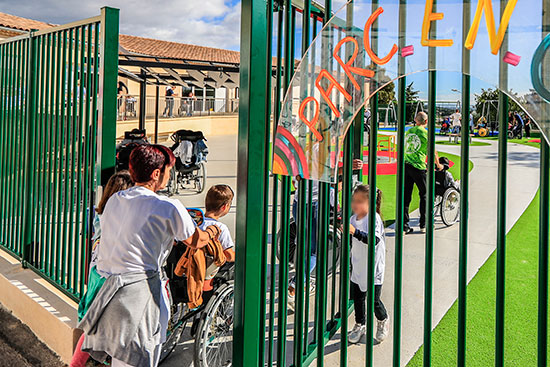
Provide flush transitions
Provide flush transitions throughout the play space and surrounding areas to allow free movement for people using mobility aids. Ensure transitions between route surfaces and play surface access points are smooth and seamless, without barriers or trip hazards. Quality communication between contractors is essential to achieving these seamless transitions.
Designing an inclusive playground
Designing for inclusion requires thoughtful integration of play values and accessibility. The following sections highlight key elements to consider when creating an inclusive play space. This guide is flexible, allowing designers to prioritize certain aspects and develop custom strategies to best meet users' needs.
Explore the pages below to help you plan and design an inclusive playground.



